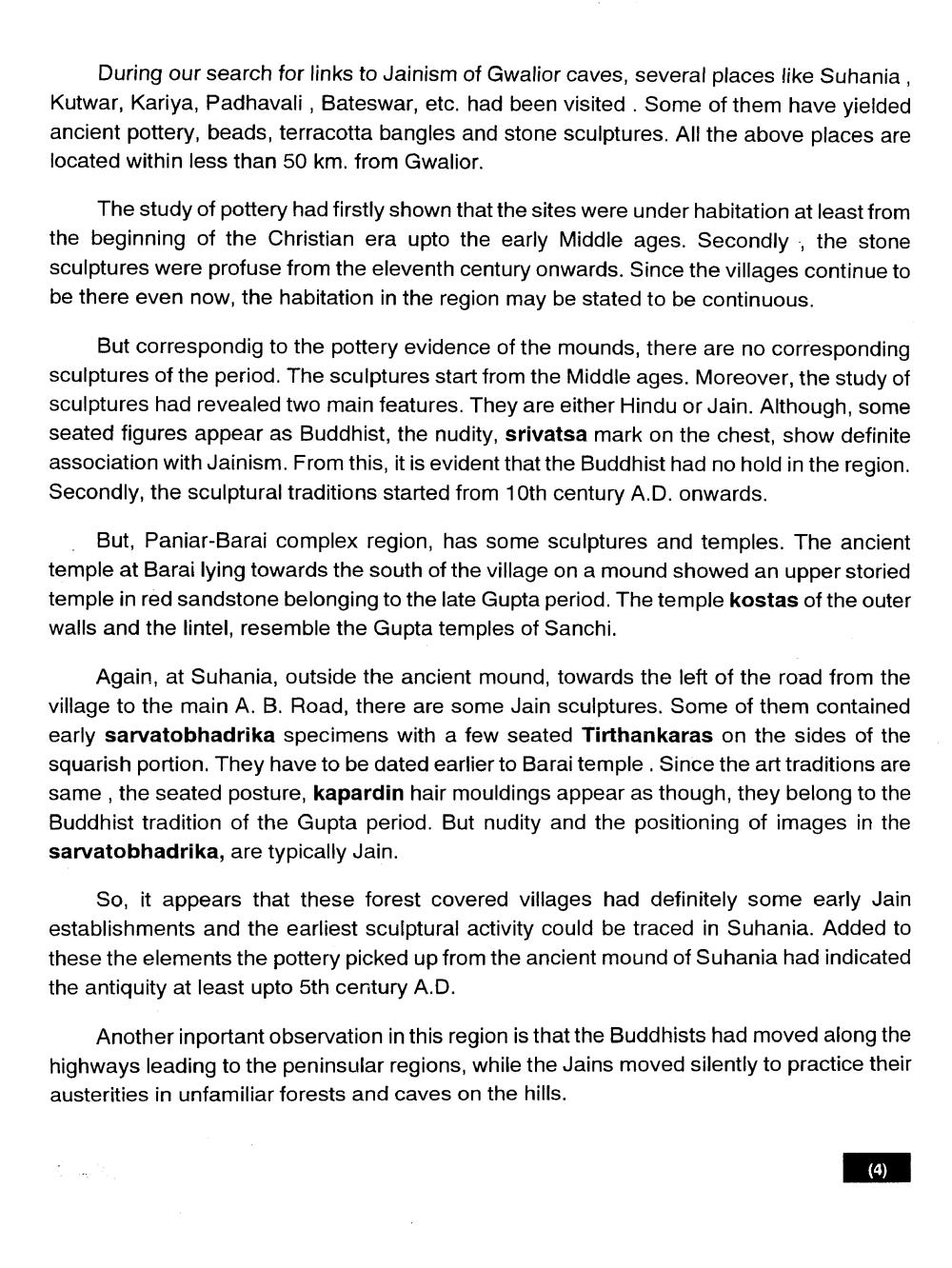________________
During our search for links to Jainism of Gwalior caves, several places like Suhania , Kutwar, Kariya, Padhavali, Bateswar, etc. had been visited. Some of them have yielded ancient pottery, beads, terracotta bangles and stone sculptures. All the above places are located within less than 50 km. from Gwalior.
The study of pottery had firstly shown that the sites were under habitation at least from the beginning of the Christian era upto the early Middle ages. Secondly, the stone sculptures were profuse from the eleventh century onwards. Since the villages continue to be there even now, the habitation in the region may be stated to be continuous.
But correspondig to the pottery evidence of the mounds, there are no corresponding sculptures of the period. The sculptures start from the Middle ages. Moreover, the study of sculptures had revealed two main features. They are either Hindu or Jain. Although, some seated figures appear as Buddhist, the nudity, srivatsa mark on the chest, show definite association with Jainism. From this, it is evident that the Buddhist had no hold in the region. Secondly, the sculptural traditions started from 10th century A.D. onwards.
But, Paniar-Barai complex region, has some sculptures and temples. The ancient temple at Barai lying towards the south of the village on a mound showed an upper storied temple in red sandstone belonging to the late Gupta period. The temple kostas of the outer walls and the lintel, resemble the Gupta temples of Sanchi.
Again, at Suhania, outside the ancient mound, towards the left of the road from the village to the main A. B. Road, there are some Jain sculptures. Some of them contained early sarvatobhadrika specimens with a few seated Tirthankaras on the sides of the squarish portion. They have to be dated earlier to Barai temple. Since the art traditions are same, the seated posture, kapardin hair mouldings appear as though, they belong to the Buddhist tradition of the Gupta period. But nudity and the positioning of images in the sarvatobhadrika, are typically Jain.
So, it appears that these forest covered villages had definitely some early Jain establishments and the earliest sculptural activity could be traced in Suhania. Added to these the elements the pottery picked up from the ancient mound of Suhania had indicated the antiquity at least upto 5th century A.D.
Another inportant observation in this region is that the Buddhists had moved along the highways leading to the peninsular regions, while the Jains moved silently to practice their austerities in unfamiliar forests and caves on the hills.
(4)




